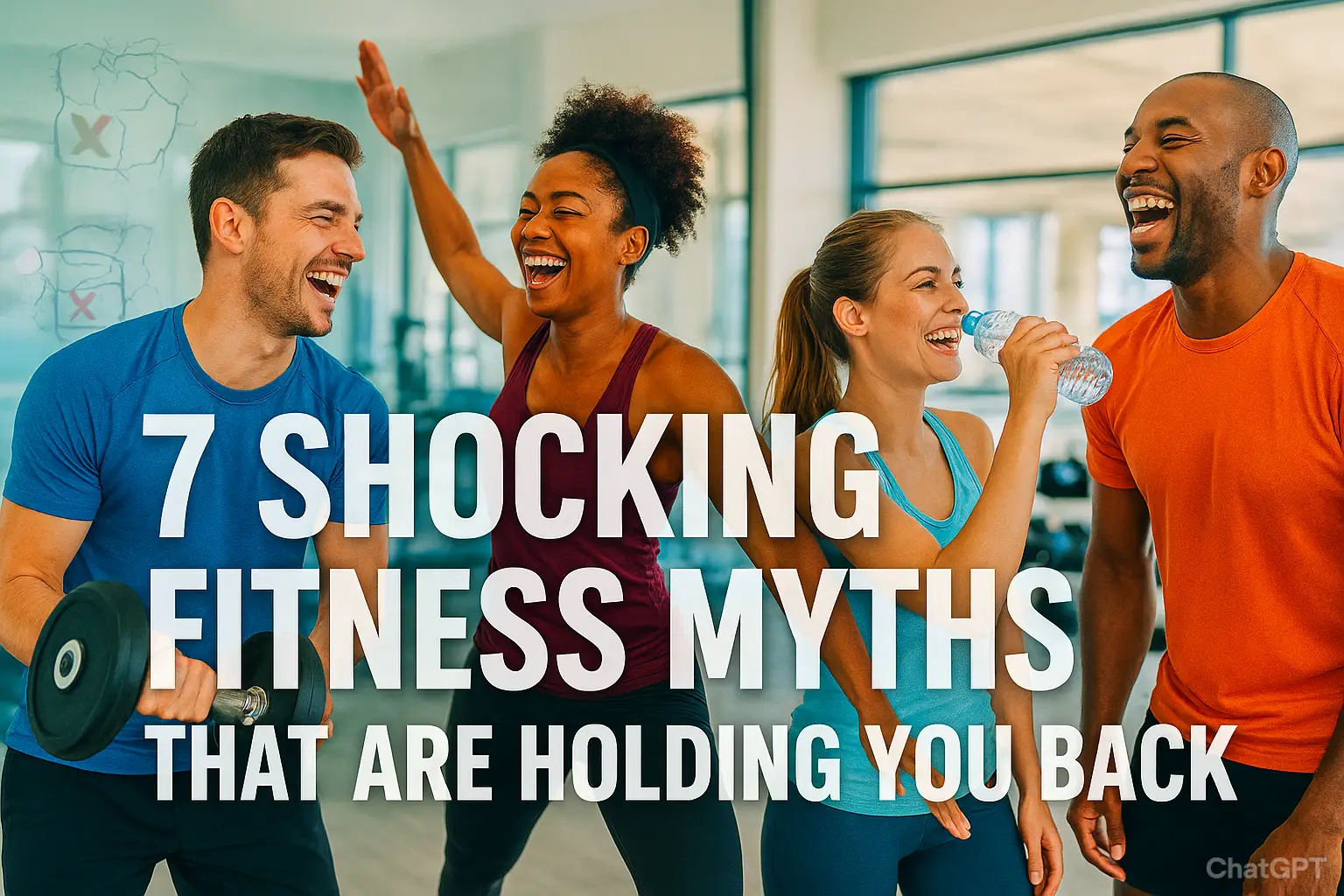
Navigating the world of fitness can feel like walking through a minefield of bad advice. Well-meaning friends, influencers, and even outdated gym lore perpetuate myths that can sabotage your progress, demotivate you, and even lead to injury. It’s time to clear the confusion and build your fitness philosophy on a foundation of science and facts. Let’s debunk seven of the most shocking and persistent fitness myths.
Myth 1: No Pain, No Gain.
This is perhaps the most dangerous myth. While muscle soreness (Delayed Onset Muscle Soreness or DOMS) 24-48 hours after a new or intense workout is normal, sharp, acute, or debilitating pain is not. Pain is your body’s signal that something is wrong. Training through it can lead to serious injuries like strains, sprains, or stress fractures, setting you back weeks or months. The new mantra should be “Train smart, not hard.”
Myth 2: Lifting Weights Makes Women Bulky.
This fear prevents countless women from reaping the immense benefits of strength training. Women have significantly lower levels of testosterone than men, the primary hormone responsible for the massive muscle growth seen in male bodybuilders. For women, strength training creates a lean, toned, and defined physique. It also boosts metabolism, strengthens bones, and improves confidence.
Myth 3: You Can Spot-Reduce Fat.
The dream of melting belly fat with endless crunches or arm fat with tricep kickbacks is just that—a dream. Your body loses fat from a genetically predetermined pattern when you create a consistent calorie deficit. You cannot control where this fat comes from. A full-body workout and a proper nutrition plan are the only proven ways to reduce overall body fat, which will eventually include your problem areas.
Myth 4: Cardio is the Best Only Way to Lose Weight.
While cardio is excellent for heart health and burning calories *during* the activity, it’s not the most efficient tool for long-term fat loss. Strength training builds metabolically active muscle tissue. The more muscle you have, the more calories your body burns at rest. A regimen that includes strength training elevates your metabolism for hours after your workout, a phenomenon known as Excess Post-Exercise Oxygen Consumption (EPOC). The ideal plan combines both.
Myth 5: The More You Sweat, The More Fat You Burn.
Sweat is simply your body’s air-conditioning system. It’s a mechanism for cooling down your core temperature and is not directly correlated with calorie or fat expenditure. You can sweat profusely in a sauna and burn very few calories, or have a highly effective strength session with minimal sweat. Sweat is a poor indicator of effort or effectiveness.
Myth 6: If You’re Not Sore, You Didn’t Work Out Hard Enough.
Muscle soreness (DOMS) is primarily a sign of novel stimulus—meaning you did something your body isn’t used to. As you get fitter, you will experience less soreness, but that doesn’t mean you’re not making progress. Consistency and progressive overload (getting stronger over time) are far better indicators of a successful program than perpetual pain.
Myth 7: You Have to Work Out Every Day.
Rest is not laziness; it is a non-negotiable part of the process. When you work out, you create microscopic tears in your muscle fibers. It is during the rest and recovery period that your body repairs these tears, building the muscle back stronger. Without adequate rest, you risk overtraining, which leads to fatigue, hormonal imbalances, performance plateaus, and injury. Aim for at least 1-2 full rest days per week.
By letting go of these myths, you free yourself to pursue a smarter, more sustainable, and ultimately more successful fitness journey.
